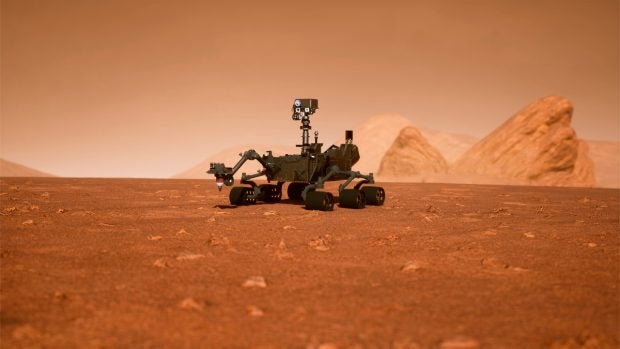Is there water under the surface of Mars? New study delivers sobering results – t3n – digital pioneers

How much water is there really on Mars? (Photo: Shutterstock / Design Projects)
Scientists have long wondered if there is water on Mars. The view into the underground plays an important role. However, new studies do not confirm the previous assumptions.
We are still in the early stages of exploring Mars. Slowly but surely we are getting more insight into the Red Planet. Latest data comes from NASA’s Mars InSight Mission (via Sci Tech Daily), which the researchers in one research letter summarized.
This is seismic data exploring the subsurface of Mars beneath the mission’s landing site. Scientists have been able to explore it to depths of 300 meters, but have found very little if any evidence of ice or water.
In order to obtain the seismic data, among other things, artificially excited seismic waves are sent underground, which can depict them graphically.
“We find that the crust of Mars is weak and porous. The sediments are not well cemented. And there is no ice or not much ice filling the pore spaces,” says Vashan Wright, geophysicist and one of the researchers.
“These results don’t rule out that there might be grains of ice, or small balls of ice, that don’t cement other minerals together. The question is how likely is it that ice is present in this form,” Wright continues.
Cemented rock always points to water. However, the Insight mission found very little of it in the examined surface. Therefore, the researchers believe that it is unlikely that large amounts of water are located here.
A leading theory about the water on Mars is that in the early days the planet was dotted with large oceans that later disappeared through the interior surface. However, the new data contradict this. This in turn does not mean that the theory is disproved.
The temperatures in the area also indicate that there were no large accumulations of water in the 300 meters examined underground. Because the average temperature of below zero degrees would have frozen the water there, explains Wright.
However, these are only initial observations and the researchers are not yet giving up hope. “As scientists today we are confronted with the best data, the best observations. And our models predicted there should still be frozen ground with aquifers underneath at that latitude,” says Michael Manga, professor and chair of Earth and Planetary Sciences at UC Berkeley.
The research on Mars is far from over. NASA plans to send two more Ingenuity drones to Mars in 2027 to bring samples back to Earth.
To map the planet, the space company used 51,000 images they have collected over the years.


